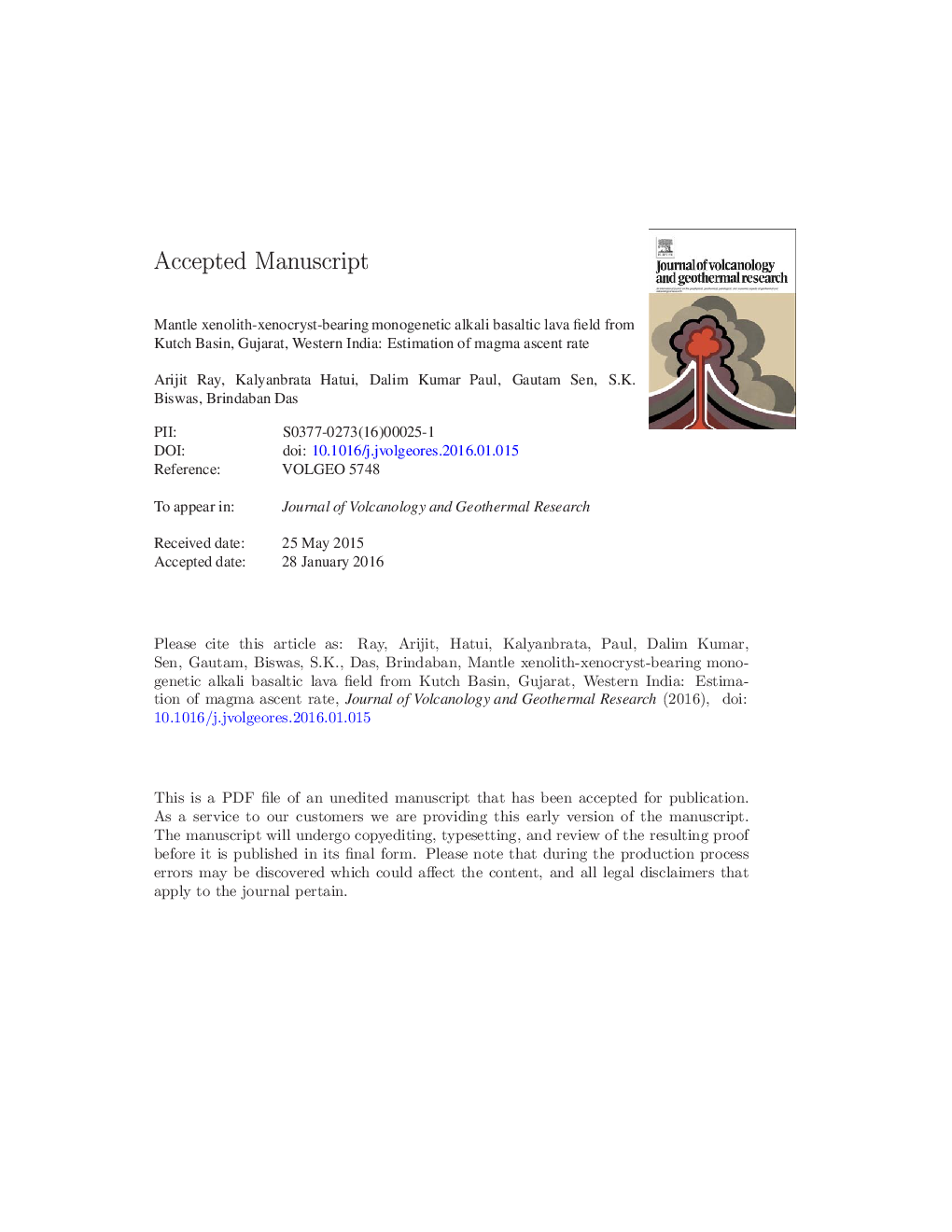| Article ID | Journal | Published Year | Pages | File Type |
|---|---|---|---|---|
| 6440172 | Journal of Volcanology and Geothermal Research | 2016 | 43 Pages |
Abstract
Kutch rift basin of northwestern India is characterized by a topography that is controlled by a number of fault controlled uplifted blocks. Kutch Mainland Uplift, the largest uplifted block in the central part of the basin, contains alkali basalt plugs and tholeiitic basalt flows of the Deccan age. Alkali plugs often contain small, discoidal mantle xenoliths of spinel lherzolite and spinel wehrlite composition. Olivine occurs as xenocrysts (coarse, fractured, broken olivine grains with embayed margin; Fo>Â 90), phenocrysts (euhedral, smaller, and less forsteritic ~Â Fo80), and as groundmass grains (small, anhedral, Fo75) in these alkali basalts. In a few cases, the alkali plugs are connected with feeder dykes. Based on the width of feeder dykes, on the sizes of the xenocrysts and xenoliths, thickness of alteration rim around olivine xenocryst, we estimate that the alkali magmas erupted at a minimum speed of 0.37Â km per hour. The speed was likely greater because of the fact that the xenoliths broke up into smaller fragments as their host magma ascended through the lithosphere.
Related Topics
Physical Sciences and Engineering
Earth and Planetary Sciences
Geochemistry and Petrology
Authors
Arijit Ray, Kalyanbrata Hatui, Dalim Kumar Paul, Gautam Sen, S.K. Biswas, Brindaban Das,
